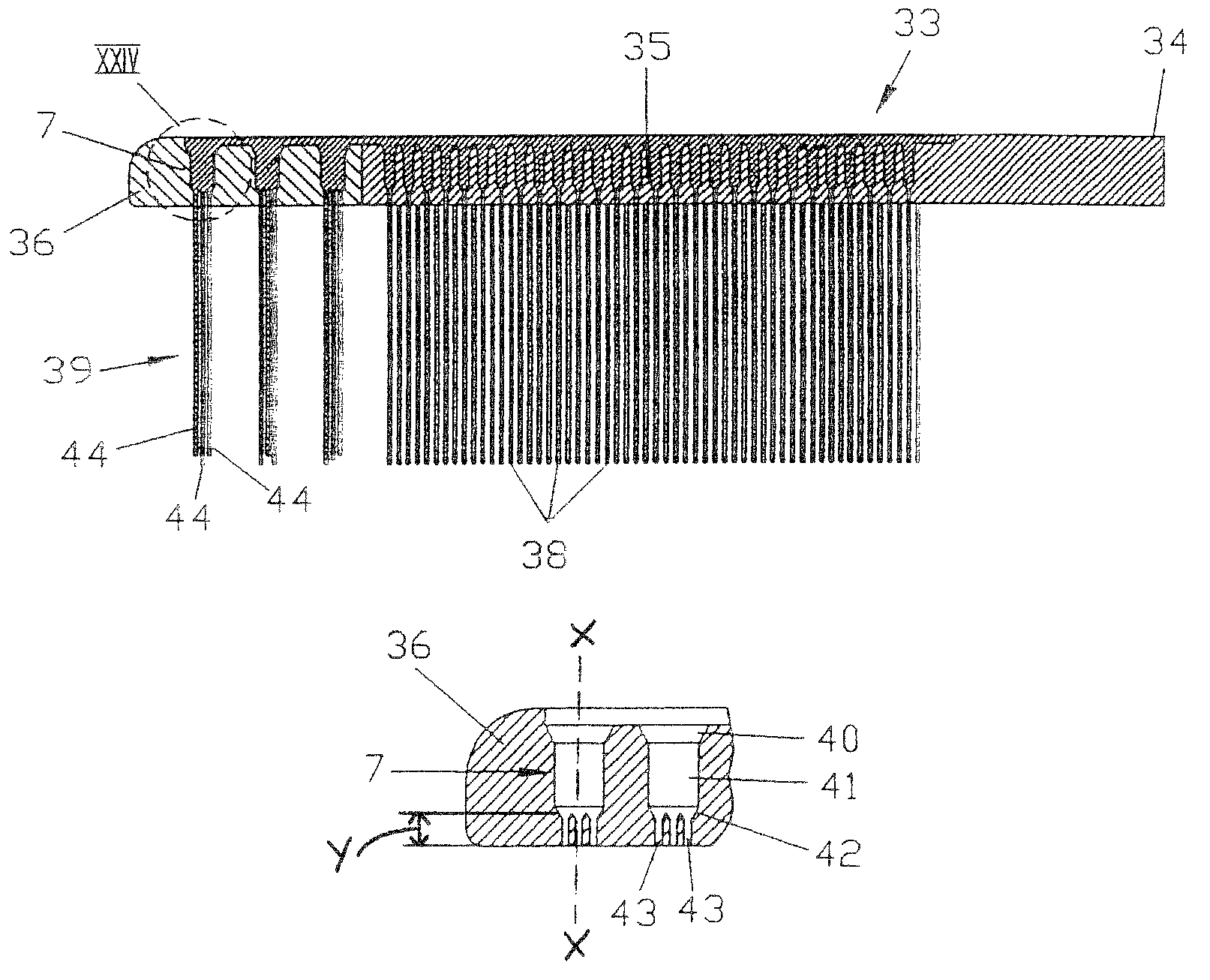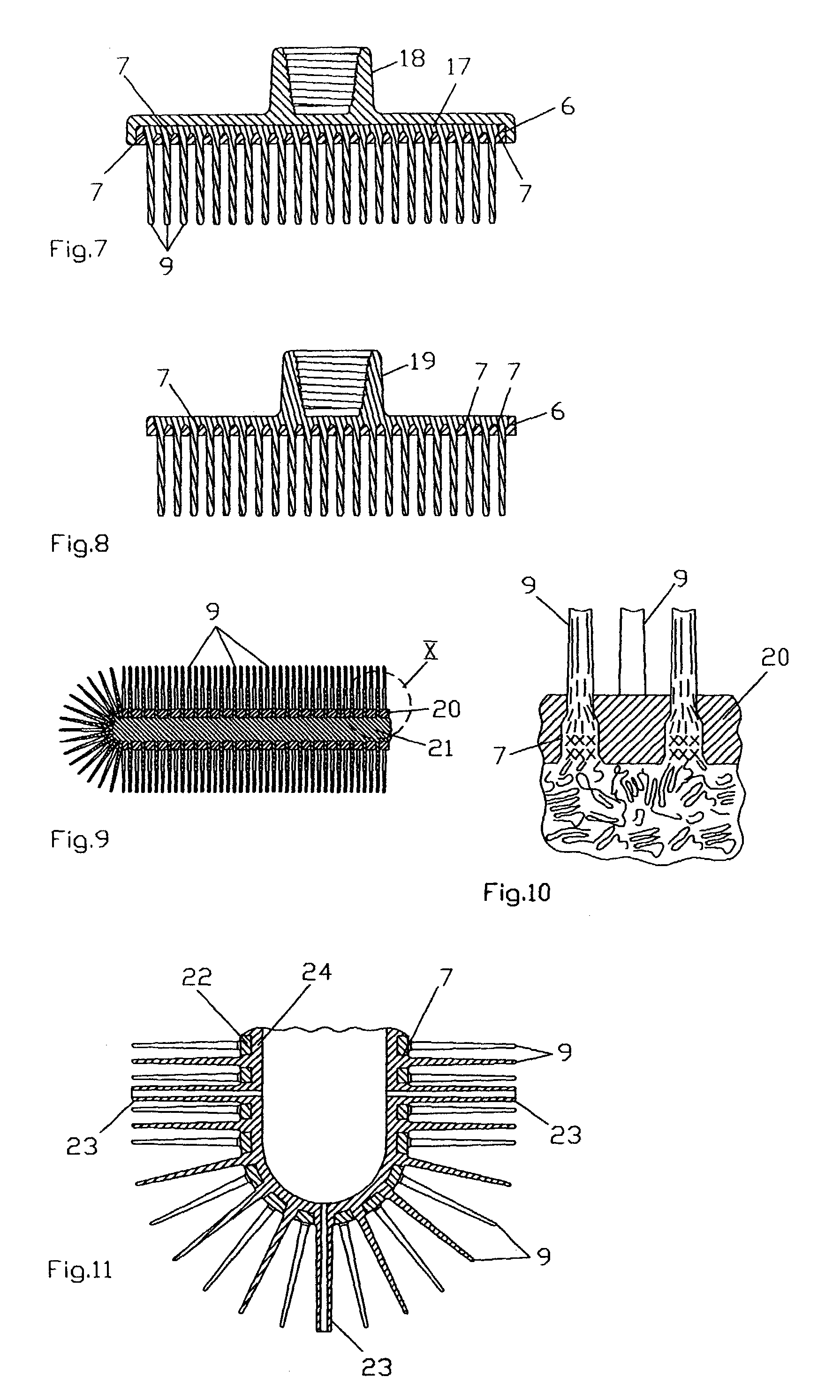Method and device for producing bristle products and bristle products
a technology of bristle products and products, applied in the direction of bristle carriers, brushes, other domestic articles, etc., can solve the problems of unacceptably low bending strength, unsuitable brushes for many applications, and lack of stability, so as to improve the flexing behavior and the ability to remain upright
- Summary
- Abstract
- Description
- Claims
- Application Information
AI Technical Summary
Benefits of technology
Problems solved by technology
Method used
Image
Examples
Embodiment Construction
[0173]FIGS. 1 and 2 are partial cross-sections through brush ware, e.g. a section in the region of the head of a tooth brush, which has been conventionally produced as a single piece through injection molding (e.g. U.S. Pat. No. 5,926,900). It comprises a carrier 1 and parallel bristle-like working elements in the form of “bolts” or “pins” which extend conically from the carrier towards their free end. The support and working elements are produced in an injection mold having a cavity corresponding to the finished brush ware. During feeding of the plastic melt in accordance with the arrow 3, that part of the cavity which forms the support is initially filled, and the molding channels for the working elements 2 are subsequently filled, thereby producing working elements having a large diameter and a relatively large diameter to length ratio. The polymer molecules in the melt have an irregular and knotted structure, which substantially remains, in the region of the carrier 4. As indica...
PUM
| Property | Measurement | Unit |
|---|---|---|
| width | aaaaa | aaaaa |
| depth | aaaaa | aaaaa |
| width | aaaaa | aaaaa |
Abstract
Description
Claims
Application Information
 Login to View More
Login to View More - R&D
- Intellectual Property
- Life Sciences
- Materials
- Tech Scout
- Unparalleled Data Quality
- Higher Quality Content
- 60% Fewer Hallucinations
Browse by: Latest US Patents, China's latest patents, Technical Efficacy Thesaurus, Application Domain, Technology Topic, Popular Technical Reports.
© 2025 PatSnap. All rights reserved.Legal|Privacy policy|Modern Slavery Act Transparency Statement|Sitemap|About US| Contact US: help@patsnap.com



